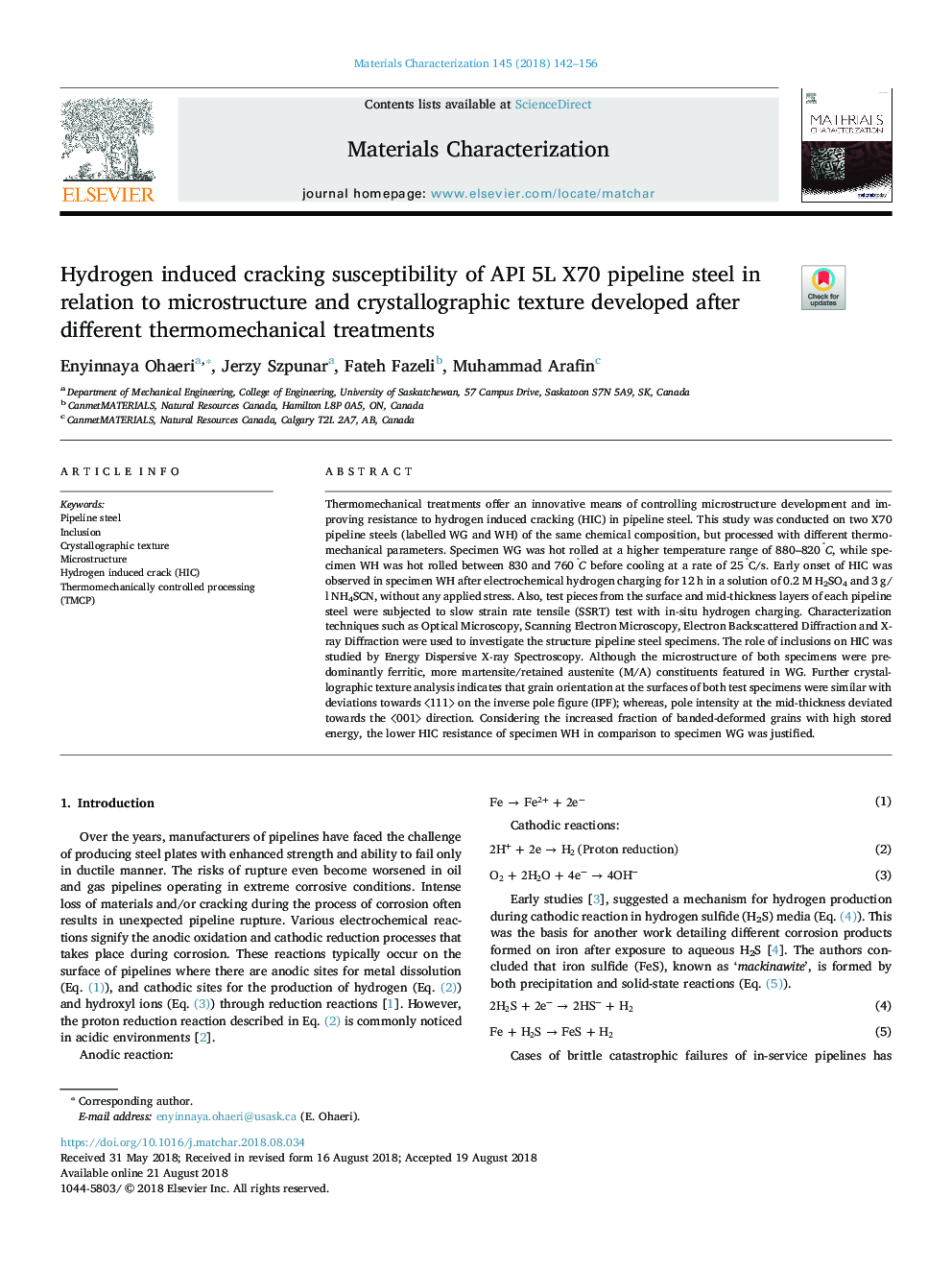| Article ID | Journal | Published Year | Pages | File Type |
|---|---|---|---|---|
| 10128564 | Materials Characterization | 2018 | 15 Pages |
Abstract
Thermomechanical treatments offer an innovative means of controlling microstructure development and improving resistance to hydrogen induced cracking (HIC) in pipeline steel. This study was conducted on two X70 pipeline steels (labelled WG and WH) of the same chemical composition, but processed with different thermomechanical parameters. Specimen WG was hot rolled at a higher temperature range of 880-820â¯Â°C, while specimen WH was hot rolled between 830 and 760â¯Â°C before cooling at a rate of 25â¯Â°C/s. Early onset of HIC was observed in specimen WH after electrochemical hydrogen charging for 12â¯h in a solution of 0.2â¯M H2SO4 and 3â¯g/l NH4SCN, without any applied stress. Also, test pieces from the surface and mid-thickness layers of each pipeline steel were subjected to slow strain rate tensile (SSRT) test with in-situ hydrogen charging. Characterization techniques such as Optical Microscopy, Scanning Electron Microscopy, Electron Backscattered Diffraction and X-ray Diffraction were used to investigate the structure pipeline steel specimens. The role of inclusions on HIC was studied by Energy Dispersive X-ray Spectroscopy. Although the microstructure of both specimens were predominantly ferritic, more martensite/retained austenite (M/A) constituents featured in WG. Further crystallographic texture analysis indicates that grain orientation at the surfaces of both test specimens were similar with deviations towards ã111ã on the inverse pole figure (IPF); whereas, pole intensity at the mid-thickness deviated towards the ã001ã direction. Considering the increased fraction of banded-deformed grains with high stored energy, the lower HIC resistance of specimen WH in comparison to specimen WG was justified.
Related Topics
Physical Sciences and Engineering
Materials Science
Materials Science (General)
Authors
Enyinnaya Ohaeri, Jerzy Szpunar, Fateh Fazeli, Muhammad Arafin,
